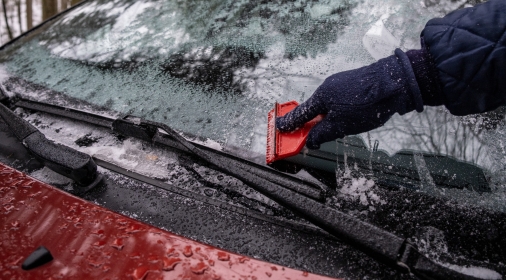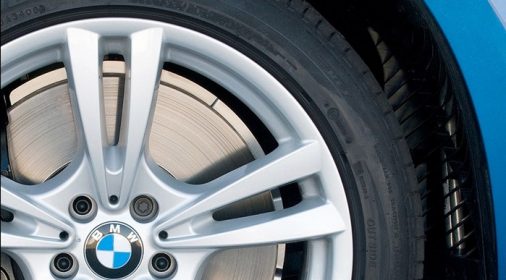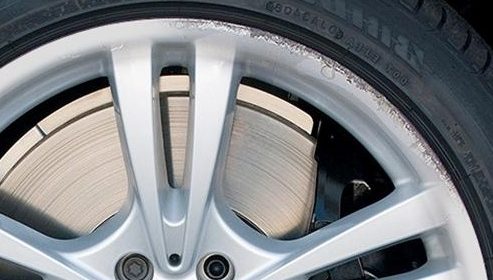Cracked Tyres Guide: Causes, Dangers & Prevention
Cracks in tyres are more than just a cosmetic concern, they could be a warning sign of deeper problems that might affect your safety on the road. Whether you’ve noticed cracks in the tyre sidewall, between the tread, or across the tyre surface, understanding the causes, dangers, and solutions is essential.
This comprehensive guide will explore what causes tyres to crack, when tyre cracking is dangerous, how to check for damage, and how to prevent perished tyres from becoming a serious issue.
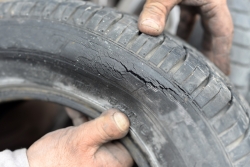
What Causes Cracked Tyres?
Cracking in car tyres happens when the rubber compounds that make up the tyre begin to degrade over time. This can be caused by several factors:
- Ageing: As tyres age, the rubber naturally loses its elasticity and begins to dry out, leading to surface cracks.
- UV Exposure: Prolonged exposure to sunlight can break down the rubber’s structure, speeding up tyre cracking.
- Extreme Temperatures: Heat causes the rubber to expand; the cold causes it to contract. This constant expansion and contraction weakens the tyre over time.
- Water Penetration: Although tyres are water-resistant, regular driving on wet roads can lead to internal moisture build-up, contributing to cracking.
- Incorrect Tyre pressure: Both underinflated and overinflated tyres are prone to premature wear and cracking due to uneven stress on the rubber.
- Chemical Exposure: Road salt, oils, and other chemicals can break down the rubber, increasing the likelihood of perished tyres.
Are Small Cracks in Tyres Dangerous?
Small cracks, particularly those on the tread blocks, are often a normal sign of ageing or wear. However, while they may appear harmless at first glance, they can develop into larger cracks that affect the tyre’s structural integrity. Warning signs to watch for:
- Small cracks in the tyre sidewall
- Cracking between tread blocks
- Any deep, wide, or spreading cracks
If you notice any of these, it’s best to have a professional inspection, as ignoring cracked tyres can eventually lead to blowouts or tread separation.
Types of Cracks in Tyres
- Tyre Wall Cracking
Cracks in the tyre sidewall are especially serious. The sidewall bears a large portion of the load and stress during driving, and cracks here can result in sudden blowouts, particularly at higher speeds.
- Tread Cracks
Tyre cracks between tread blocks may indicate ageing, exposure to the elements, or insufficient tyre pressure. While initially less dangerous, they can deepen over time and affect traction and safety.
- Shoulder and Bead Cracks
Cracking along the shoulder or bead (the area where the tyre meets the rim) may signal serious wear or manufacturing flaws and should be assessed immediately.
How to Check for Cracked Tyres
Inspecting your tyres regularly can help catch tyre cracking early:
- Visual Inspection: Look closely at the sidewalls, tread area, and inner edge for any visible lines or splits.
- Tyre Pressure Checks: Use a quality tyre pressure gauge (available at most petrol stations) to ensure your tyres are inflated to the correct pressure. You can find the recommended pressure in your car’s handbook or online.
- Look for Other Signs: Bulges, blisters, or discolouration can be signs of deeper internal damage.
Make sure you check all four tyres, as pressure and wear can vary between them.
Can You Fix Cracked Tyres?
In most cases, tyre cracking cannot be repaired. Once the rubber begins to degrade, the tyre’s structural integrity is compromised. Temporary fixes, like sealants or fillers, do not restore the tyre’s safety and are not recommended.
If cracking is visible, especially sidewall cracking, the safest course of action is to replace the tyre.
When to Replace Cracked Tyres
Knowing when to replace cracked tyres can prevent dangerous accidents. Here’s when replacement is essential:
- Cracks on the sidewall or deep within the tread
- Tyres older than 5 years, even with good tread
- Cracking car tyres that show signs of brittleness or stiffness
- Signs of tread separation or bulging
Even if your tyre has plenty of tread left, age and condition matter more when it comes to cracking. Always consider replacing perished tyres before they fail.
How to Prevent Tyres from Cracking
Preventing tyre cracks involves consistent care and attention:
- Check and maintain correct tyre pressure regularly
- Park in shaded or covered areas to avoid UV exposure
- Drive regularly to keep rubber flexible (unused tyres can crack faster)
- Use tyre protectants to condition rubber if storing tyres for long periods
- Inspect tyres during servicing for early signs of cracking
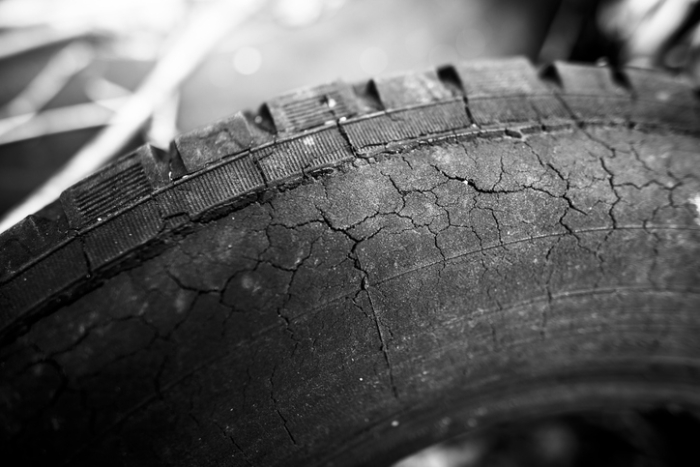
FAQs
Is cracking on a tyre an MOT failure?
Yes, if the cracks expose the internal structure or are judged to compromise safety, cracked tyres will fail an MOT.
How much tyre cracking is too much?
Small surface cracks may be acceptable, but any deep, long, or widespread cracking, especially on the sidewall, is too much and warrants tyre replacement.
Can you get points for cracked tyres?
Yes. Driving with dangerous or defective tyres, including excessively cracked tyres, can result in 3 penalty points per tyre and a fine.
How long should tyres last before cracking?
Most tyres start to show signs of ageing or cracking after 5 to 6 years, though this depends on usage, storage, and exposure to environmental conditions.
Cracks in tyres are not just a cosmetic flaw, they can compromise your vehicle’s performance and safety. Whether it’s small cracks in the sidewall or deeper tread cracking, inspecting and maintaining your tyres regularly can help prevent dangerous issues down the line. If in doubt, have your tyres checked by a professional and don’t take the risk of driving on damaged tyres.

